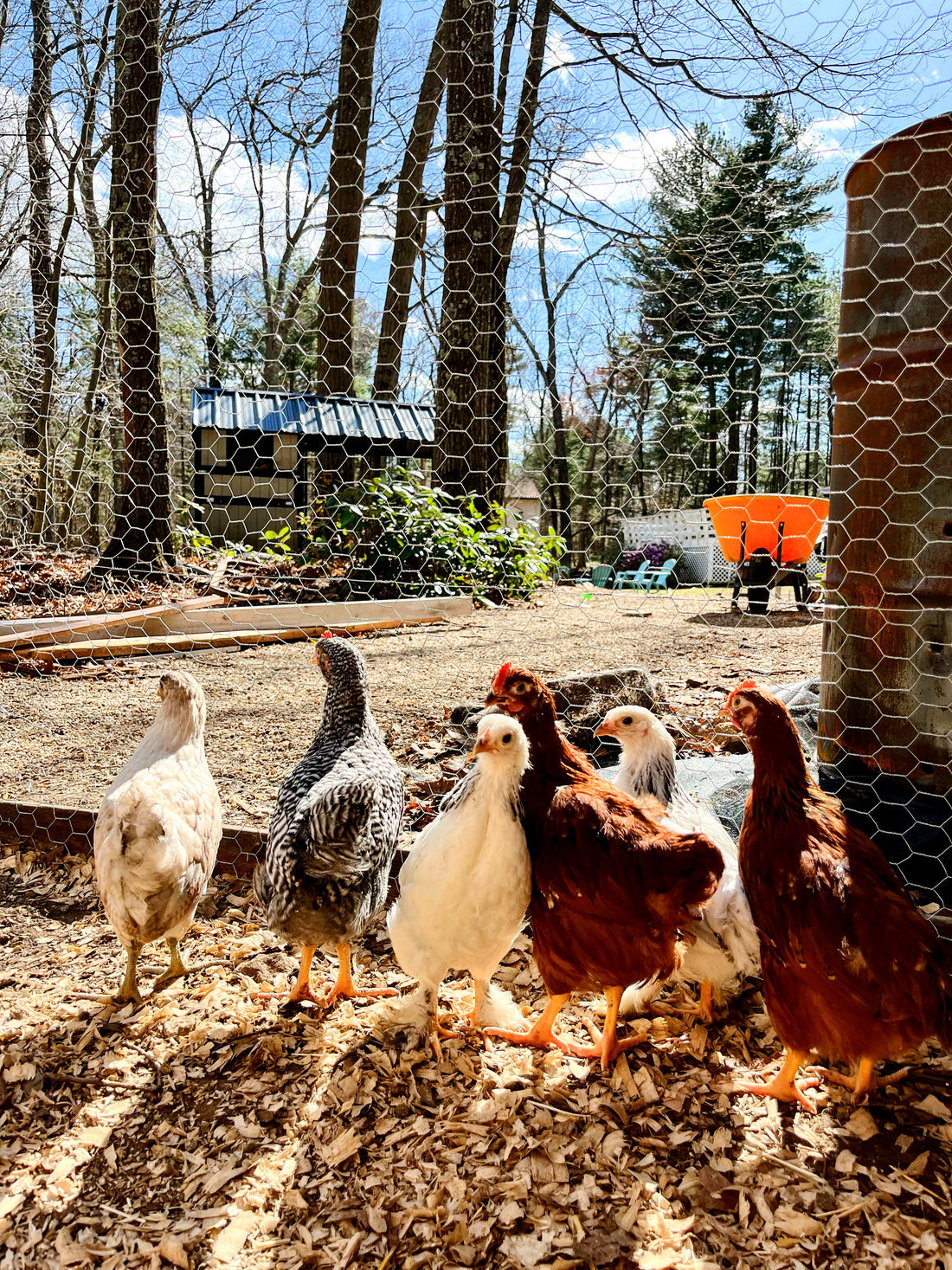 When we first decided to get chickens, we started with 6 chicks and two pekin ducks that our daughter talked us into. We set up a brooding room in a storage area of our basement, started building the coop, and bought all the supplies necessary to keep them fed. Seemed simple enough. We had no idea how much we had to learn! The biggest lesson: raising backyard poultry is ADDICTING.
When we first decided to get chickens, we started with 6 chicks and two pekin ducks that our daughter talked us into. We set up a brooding room in a storage area of our basement, started building the coop, and bought all the supplies necessary to keep them fed. Seemed simple enough. We had no idea how much we had to learn! The biggest lesson: raising backyard poultry is ADDICTING.
Two years later, we have 15 chickens and 10 ducks of all different breeds. A coop, a duck house, and a freshly dug pond line our landscape. Looking back on the last few years, we made some mistakes and took some losses along the journey. Free ranging our birds was always non negotiable, but it doesn’t come without risk.
We’ve faced a coyote, a fox, and most recently, an illness that we had to troubleshoot to find the source. Despite all of this, I wouldn’t trade free ranging my birds. Taking proper steps to ensure their safety is key. We added a rooster to protect our flock, and our pups act as livestock guardians. We do regular treatments of the wood line with “predator pee” to ward off predators, and play the radio when we aren’t home for a little bit.

If you’re considering taking the leap and adding backyard poultry, here are out top tips:
-
Don’t underestimate poultry math!
When choosing a coop, always opt for more space than you anticipate. Chickens need room for nesting, roosting, and access to a run when not free ranging. As you submerse yourself in the poultry world, that small flock you started with almost always grows bigger than you imagined. -
Consider differing needs of your chosen poultry.
If you chose to house your chickens and ducks together, I would only recommend this for free range birds. Ducks need all time access to water they can clean themselves in and dip their whole heads in, but too much water in the coop can be detrimental for chickens. Having a water source close by but out of the coop/run area helps ensure everyone’s needs are met safely. -
Predator proof like a pro.
Make sure safety is your top priority. Consider predators that live in your area. If they are diggers, bury hardware cloth around the perimeter. For predators who can squeeze in small spaces, wrap any gaps with hardware cloth as well. Provide cover against predatory birds, and strong locks to keep out larger threats. If you plan to free range, a fence is ideal. We do not have a fence around our yard, so we compensate using decoys, predator pee, and utilizing our dogs as livestock guardians. -
Conquer cleaning and maintenance.
Sanitary conditions are vital for both you and your chickens. It will keep them healthier and your eggs will be cleaner as well. Taking eggs out daily (unless you’re hatching fertile eggs) ensures they don’t get soiled. To help deodorize, block out moisture, aNST avoid pest issues, we sprinkle first saturday lime underneath and on top of fresh bedding when we clean the coops. -
Take the time to train!
Did you know that chickens are extremely smart? Not only do they enjoy enrichment activities, they also can learn prompts. They respond well to clicking noises and can pick up on phrases if you are consistent. For example, we use mouth clicking noises to call the flock back in if they try to wander to far, and the repeat the phrase “snack time” when it’s time to eat. Not only is this a fun way to interact with your birds, it’s also helpful for when you may need to herd them back into the coop!

All in all, raising back yard poultry has been a very rewarding and educational experience for my family and I. It’s a journey that has helped teach my children responsibility, the importance of caring for animals, and how to live sustainably.

